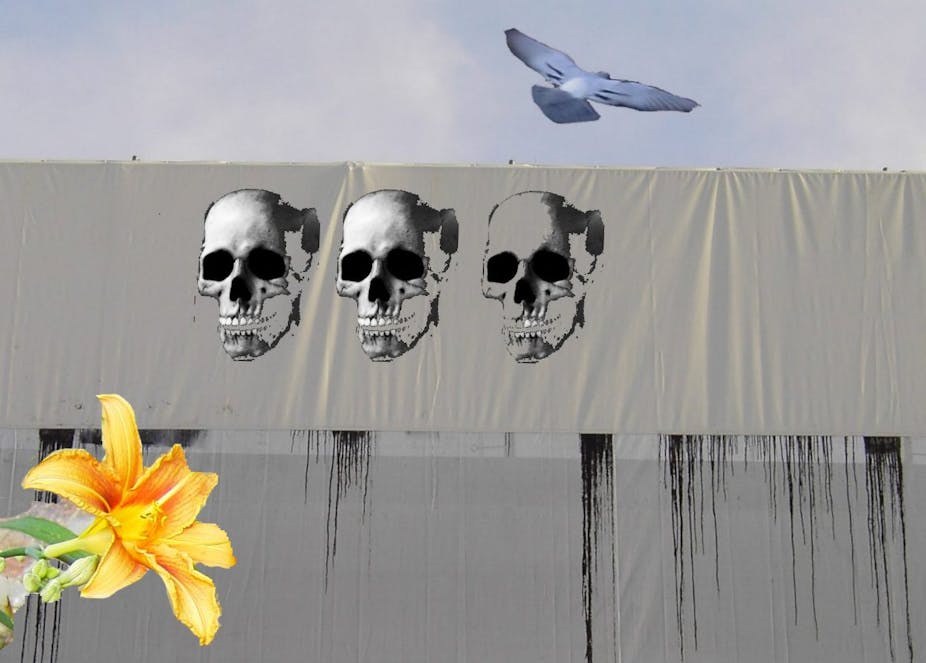Recently on The Conversation, I described a remarkable moment of language experimentation highlighted by recent Australian poetry prizes. Panning out to a wider view of contemporary Australian poetry, we see that moment within a robust, largely independent publishing scene.
You don’t need to know a poet or about poetry, attend salons and soirées; just scramble for the book pages of the newspaper. Every week in Melbourne, poet and critic Gig Ryan selects a new short poem for the Saturday Age.
Ryan’s counterpart at the Weekend Australian is Jaya Savige, a Queensland poet based in England, who regularly prints flights of new local verse. These selections provide a weekly snapshot of the poetic voices at work in our midst.
A more sustained engagement can be sought in any good bookstore. Responsible for releasing the work of prizewinners such as Jessica L Wilkinson, Fiona Hile and Liam Ferney respectively, Vagabond Press, Hunter Publishers and Grand Parade Poets are just a few on the healthy list of independent Australian publishers showcasing new poetry.

A glance at some other poetry releases in the last six months – Kent McCarter’s Sputnik’s Cousin (Transit Lounge), Jill Jones’ The Beautiful Anxiety (Puncher & Wattmann), Melinda Bufton’s Girlery (Inken Publisch), Paul Magee’s Stone Postcard (John Leonard Press), plus John Mateer’s Emptiness (Fremantle Press) and Unbelievers, or “The Moor” (Giramondo) – provides further evidence of this industry. Boutique and indie publishers have stepped up to foster a steady supply of Australian poetry.
Meanwhile, established university presses such as UQP and UWA Publishing continue to support the circulation of new and selected Australian verse; little magazines such as Rabbit, Unusual Work and New Trad are devoted solely to print publication of new local poetry.
Handsome literary magazines such as Seizure and Voiceworks regularly make a feature of poetry by emerging Australian writers; and our longest running literary journals, Meanjin (Melbourne) Southerly (Sydney) and Island (Tasmania) – also affiliated with universities – not only feature new poetry and poetry reviews in their print editions, but have developed lively online presences with which to extend their reach.
The web has certainly influenced the way Australians publish poetry, and it reflects the way we write and read it, too. Our industry of printing poetry is spread all around the country, but web publishing takes it further.
Visit Jacket2, Cordite Poetry Review, Mascara Literary Review or Snorkel, and find yourself in a link-labyrinth of poetry tourism.
These online journals are transnational and transcultural publications: with editorial beginnings in Australia, their mostly voluntary staff and advisors include diverse cultural and geographical representation, and they make a feature of translated work and critical writing from various international fronts.
In this sense, web poetry journals may be the most truly representative publishers of Australian poetry: presenting local work through its linguistic, critical and thematic links with Asian, Indigenous, North and South American, European and Trans-Tasman authors and exchanges.
Web journals such as these are living archives of current poetic culture, freshly updated and expanded.

As editorially rigorous as their more rarefied print cousins, web journals offer something more: a full sense of contemporary poetry’s intersection with other media. Sound poetry, concrete poetry and poetry written for oral performance are best served by online sources that can support the media in accessible, high-quality and cheap forms.
Without leaving the house – or their country – a reading audience can become a listening one by tapping into multimedia delivery. This is still an area of potential for our poetry journals. And it seems that online is where the weight of poetry’s ancient tradition – and the edges of poetic experimentation – can be most imaginatively japed, as in the case of the Bot or Not? project created by local writers Benjamin Laird and Oscar Schwartz.
The financial model for Australian poetry publishing is rich and rare: personal investment and in-kind support is its core; government arts funding is a significant enabler; and income from sales, subscriptions and patronage helps to sustain essential costs but seldom equals profit.
A vulnerable yet persistent ecology, its weird blooms exceed the edifices of demand, utility, capital and state.

